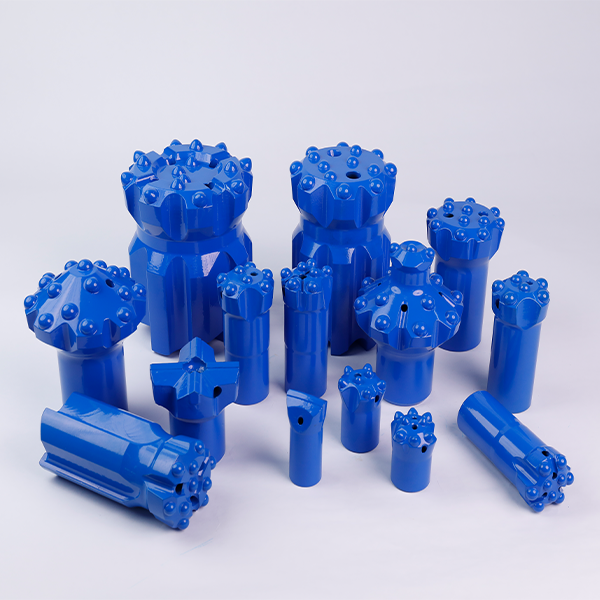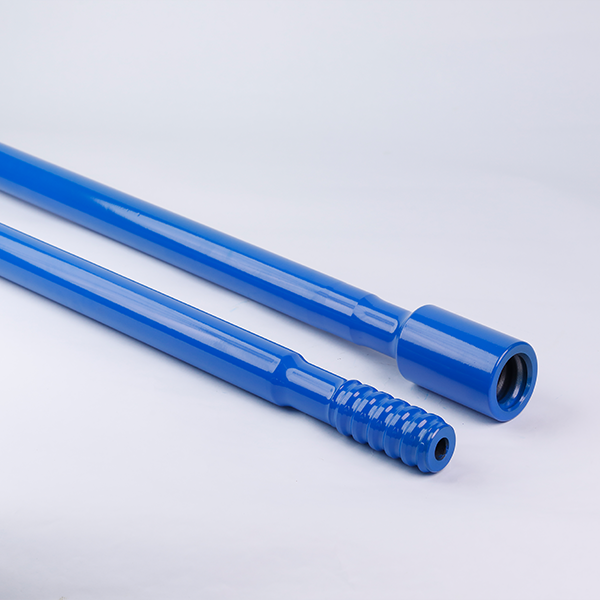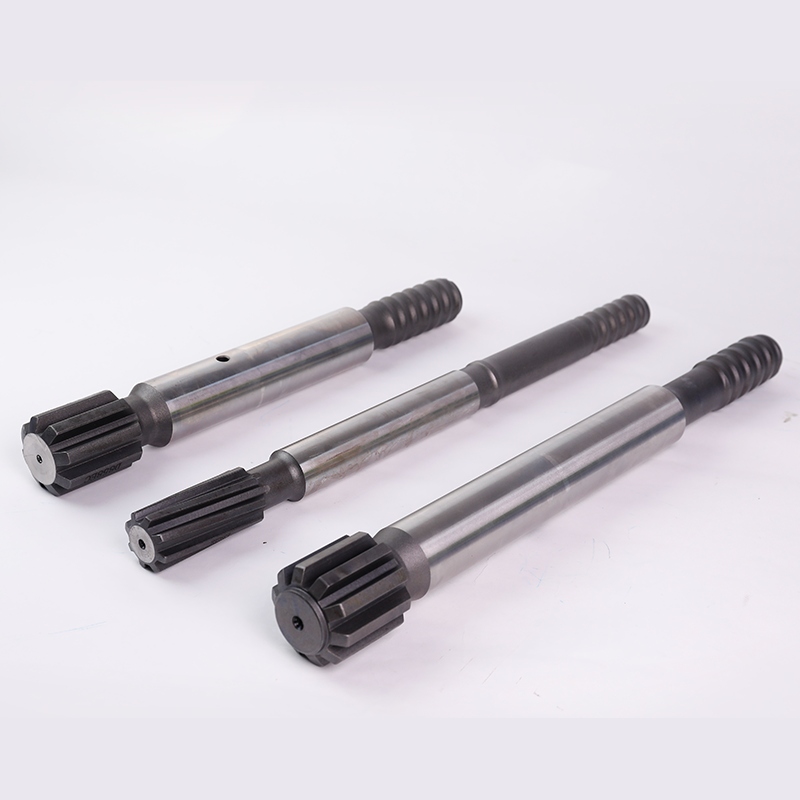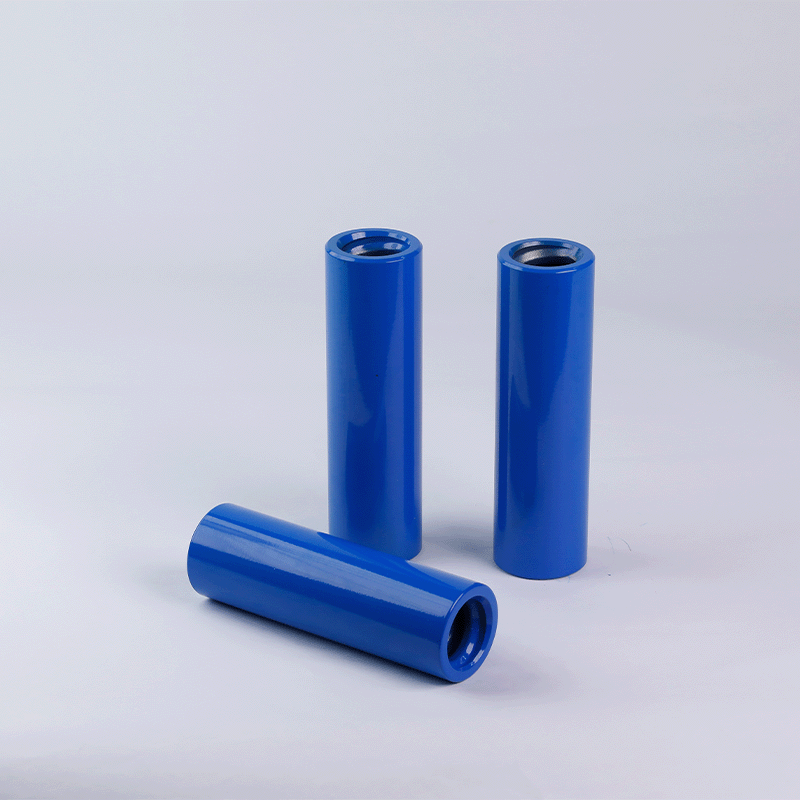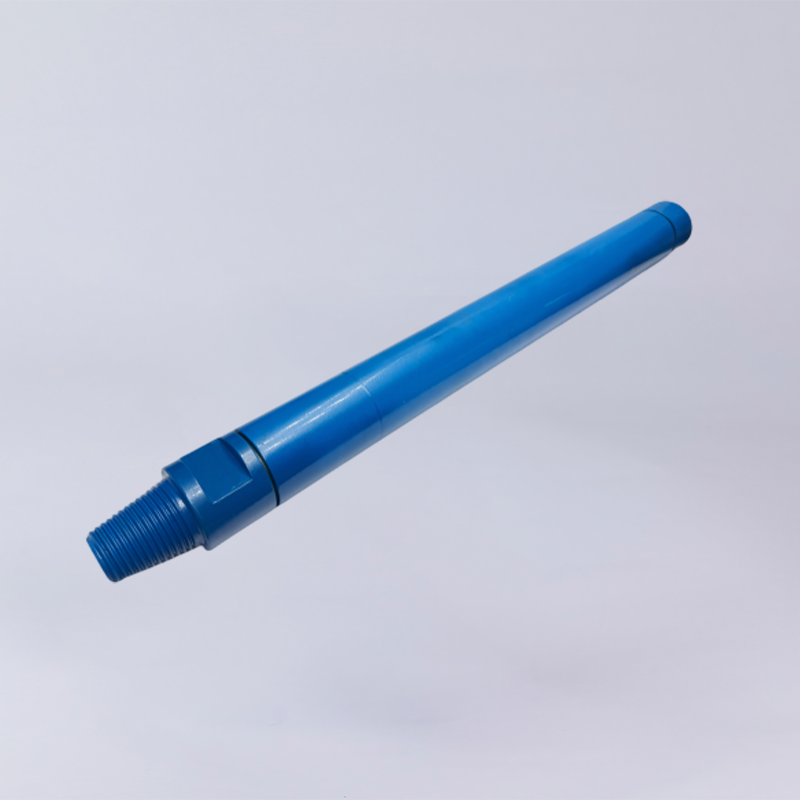Rock drilling tools are crucial for mining, energy construction, foundation engineering, traffic road development, and other construction fields. Because it is a tool product matched with rock drilling machinery, there are varieties and specifications, and the methods of use are also different. According to the types of drilling rig used in geotechnical drilling and excavation engineering, the supporting drilling rig include top hammer rock drilling tools, DTH drilling tools, mining core drilling tools, reverse patio drilling tools, mechanical cutting drilling tools, and geological exploration drilling tools.
As a key component of rock drilling tools, rock drill bits play an important role in the rock drilling process. Common rock drill bits include DTH drill bits, tapered bits, threaded button bits, button bits, etc. Previously we introduced what is a button bit,today, I will introduce you to DTH drill bits.
What is the DTH drill bit?
The DTH drill bit is a kind of drilling tool connecting the hammer with the spline of the rock drill bit to guide and transmit the rotation for the impact, with the rock drill bit and the DTH hammer diving into the hole to break the rock. DTH drill bits include high, medium, and low pressure DTH drill bits. It is mainly used in large open-pit mines, underground ore mining, anchoring engineering, quarrying, construction engineering, and large-scale engineering construction.
After understanding the basic definition of a DTH drill bit, how does its internal structure support these functions? Let's analyze it from the main structure.
The main structure of the Drill Bit
The DTH drill bit includes carbide buttons, exhaust holes, head, splines, and impact end faces.
Carbide buttons: Carbide buttons bear the hammer’s high-frequency stress waves, transmitting them directly to the rock to cut it.
Exhaust holes: The wear of the DTH drill bit and carbide button during drilling depends on skirt body/carbide material properties and cuttings size/flow velocity at the hole bottom.
Head: DTH drill bit crown shapes (two, three, four airfoils) vary, with selection based on field conditions, hole depth, and diameter.
Splines: The DTH drill bit breaks rock via impact and rotation, with the drill pipe supplying torque through splines at the bit’s end.
Impact end faces: Carbide button arrangement on the DTH drill bit depends on the end face shape, directly impacting energy transfer efficiency and bit strength.
Key parameters in structural design, such as the design of a DTH drill bit end face, directly determine the classification and applicable scenarios of the rock drill bit.
The Design of the DTH drill bit end face
Convex Surface: Suitable for hard and highly abrasive rock formations. The steel body of the DTH drill bit is less prone to wear. It features a fast drilling speed, but it's difficult to control the deviation of the blast hole.
Concave Surface: Applicable to all types of rock formations, and works best in medium-hard and uniformly - lithological rock formations. The blast hole deviation is small and the slag discharge performance is good.
Flat Surface: Appropriate for drilling extremely hard and highly abrasive rock formations under high air pressure.
Double-sided Tooth Profile: Suited for drilling extremely hard rock formations under high air pressure. In this case, the drilling speed is fast and the wear of the DTH drill bit body is relatively low.
Center-sunken Type: Ideal for drilling soft and cracked rock formations under low - to medium-air pressure. At this time, a high rock-drilling speed and a low blast hole deviation rate can be achieved.
In addition to the classification based on the drill bit’s end face design, what other classification methods are there? Let’s take a look.
The classification of the DTH drill bit
Based on the different specifications and models matched with DTH hammers, that is, the different shank ends of rock drill bits, DTH drill bits can be divided into three types: high-pressure DTH drill bits, medium-pressure DTH drill bits, and low-pressure DTH drill bits.
High-pressure DTH drill bits
High-pressure DTH drill bits are generally used in conjunction with high-pressure DTH hammers.The number of splines of this type of drill bit ranges from 8 to 16. Although the tail lengths of different series are not the same, they are all generally above 260mm.
Medium-pressure DTH drill bits
Medium-pressure DTH drill bits are generally used in conjunction with medium-pressure DTH hammers.The number of splines of this type of drill bit is relatively uniform, all being 6, and the tail lengths do not vary much, ranging from 163mm to 165mm. Since the outer diameters of the DTH hammers they match are generally not more than 4 inches, the DTH drill bits they match are all small-sized rock drill bits.
Low-pressure DTH drill bits
Low-pressure DTH drill bits are generally used in conjunction with low-pressure DTH hammers.The number of splines of this series of rock drill bits is relatively small, ranging from 4 to 6.
It can be seen that the main differences among DTH drill bits of different pressures lie in the number of splines and the tail length. Generally, the higher the pressure, the greater the number of splines and the longer the tail length. ·
Next, let’s take a look at the working principle of the DTH drill bit, and the shape and purpose of the drill bit alloy.
Working principle of the DTH drill bit
When the DTH drill bit is working, the pressure regulating mechanism is advanced to push the drill tool continuously and keep the drill bit in contact with the rock at the bottom of the hole. The rotary mechanism makes the drilling tool rotate continuously. At the same time, under the action of air pressure, the hammer piston installed at the front end of the drill pipe continuously impacts the drill bit, and the drill bit obtains energy after the impact, dives into the bottom of the hole, and generates an impact force that squeezes the rock. The rock drilling tool rotation prevents the drill bit from hitting the same drilling trace repeatedly and generates a shear force scraping the rock at the bottom of the hole. Under the action of the impact force of the hammer piston and the shear force of the rotary mechanism, the rocks are constantly being crushed and sheared away. The air pressure enters through the gas joint, reaches the bottom of the hole through the hollow drill pipe, and blows the cut slag from the annular space between the drill pipe and the hole wall to the outside of the hole, thus forming a blast hole.
The efficient working principle relies on high-quality material support. So how to choose the right material based on the hardness of the rock formation and the drilling strength? Let me briefly introduce it to you.
Selection of DTH drill bit material
The DTH drill bit material is selected with a higher surface hardness to enhance wear resistance, and better core toughness to enhance the impact resistance. To avoid brittle rupture and fatigue break, the material should have good fracture toughness, fatigue strength, and fracture strength.
It has high hardenability. It is beneficial to improve the surface yield strength and the fastening force of the hole to the carbide button. It also improves the yield strength and toughness of the core.
It can resist corrosion when encountering gas and liquid in the underground rock formation.
Under high temperatures, the hardness of the material is stable and not easy to soften.
Good process performance, such as good forgeability, etc.
High metallurgical quality, good organizational uniformity, fewer impurities, especially low phosphorus content, and uniform carbide.
In conclusion, the selection of DTH drill bit material should have high dynamic load strength and excellent wear resistance. The structure should be conducive to pressurized air being introduced into the bottom of the hole to cool the drill bit and remove rock slag. The shape is simple and easy to manufacture. The ratio of drill bit weight to piston weight should be close to 1 to improve the efficiency of impact energy transfer.
From the structural design of the DTH drill bit to its working principle and material selection, all give it unique advantages. The core advantages are summarized below.
The Core Advantages Of DTH Drill Bit
Utilizing high-quality raw materials and advanced heat treatment processes, the DTH drill bit acquires excellent hardness and wear resistance. With stringent quality control, it guarantees efficient and smooth drilling operations, significantly enhancing construction efficiency.
Three types of DTH drill bit end-face designs (concave, flat, and convex) are adopted for different rock formations, enabling adaptation to diverse and complex geological environments. Whether dealing with hard rock layers or soft soil layers, efficient rock drilling can be achieved, providing all-around support for engineering construction.
An excellent alloy-inserting technique is employed to prevent the carbide button from falling off during normal use of the DTH drill bit. Meanwhile, high-quality cemented carbide of appropriate sizes is selected to ensure the stability of the DTH drill bit's alloy service life.
How do these advantages come into being in actual projects? How do different industries choose the right rock drill bit type based on their needs? Next, we will introduce the application scenarios.
The Application of DTH Drill Bit
Quarrying
DTH drill bits are commonly used in quarries. For individual quarries, cost is a key consideration. Since low-pressure DTH drill bits are relatively inexpensive, individual quarries generally choose to use them, which can meet the operational needs of small-scale individual quarries with relatively low mining intensity. In contrast, for construction quarries, due to their large-scale projects and relatively high economic benefits, as well as high requirements for stone production capacity and quality, medium - and high-pressure DTH drill bits are commonly used.
Mining
In the mining industry, high-pressure DTH drill bits play an important role when the bench mining method is adopted. The bench mining method usually involves mining deeper ore layers and requires DTH drill bits with strong drilling capabilities to meet the requirements of deep-hole rock drilling. When high-pressure DTH drill bits are combined with high-pressure DTH hammers, they can generate greater impact force, enabling the DTH drill bits to drill efficiently in hard ores. In underground mining, faced with complex geological conditions and narrow working spaces, the precise drilling ability of high-pressure DTH drill bits can effectively reduce disturbances to the surrounding rock formations and ensure the safety of mining operations.
Tunneling
Due to their large diameters and deep drilling depths, DTH drill bits are very suitable for deep-hole rock drilling in tunnel construction. They can drill deep holes in one go, reducing the number of drilling operations and the labor intensity of construction workers. Meanwhile, deep-hole rock blasting can more precisely control the rock fragmentation range, reducing damage to the surrounding rocks and improving the stability of the tunnel's surrounding rock.
Hydropower Projects
Hydropower projects have high requirements for drilling efficiency and accuracy, so medium- and high-pressure DTH drill bits are often selected. These DTH drill bits can better control the depth and accuracy of drilling, ensuring the installation quality of reinforcement facilities. In the construction of water diversion tunnels for hydropower stations, medium - and high-pressure DTH drill bits can also be used for pre-splitting blasting of the rocks around the tunnel. Through precise drilling and blasting, disturbances to the surrounding rocks can be reduced, and the forming quality and stability of the tunnel can be ensured.
Conclusion
In actual rock drilling projects, different application scenarios have different requirements for DTH drill bits. If you want to get the best results, the premise is to choose the right DTH drill bit. Because DTH drill bits are usually used in conjunction with DTH hammers to drill rock, companies can choose DTH drill bits based on rock conditions (hardness, abrasion) and drill type (high wind pressure, low wind pressure). Different carbide buttons and button distribution methods are suitable for drilling different rocks. In short, the drilling speed and the service life of the drill bit can be improved when all aspects of the drill bit are in line with the operating conditions.

